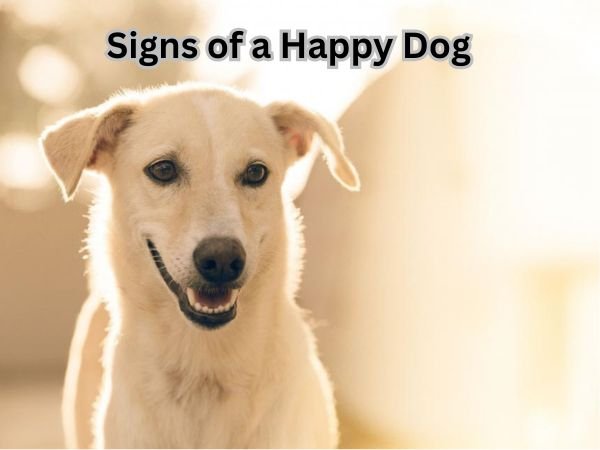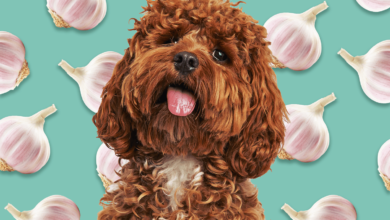
Have you ever caught yourself staring at your furry companion, wondering if they’re truly content with their life? Maybe they seem a bit quieter than usual, or you’re second-guessing whether that tail wag really means happiness. As dog owners, we constantly worry about our pets’ well-being, yet many of us miss the subtle signs of a happy dog that are right in front of us every day. The truth is, our four-legged friends are constantly communicating their emotional state through body language, behaviors, and energy levels that we often overlook or misinterpret. Understanding these powerful clues isn’t just about peace of mind—it’s essential for strengthening your bond and ensuring your dog’s overall health and happiness.
In this guide, we’ll explore seven unmistakable indicators that reveal when your dog is truly thriving, helping you become a more confident and connected pet parent who never has to wonder again.
Understanding Dog Body Language and Happiness
Dogs talk to us without words. They use their bodies to share how they feel. Paying attention to dog body language helps us know when our furry friends are happy. A happy dog shows good behavior that makes every pet owner smile.
Happy Dog Behavior to Look For
Here are some signs that show a dog is feeling joyful:
- Wagging Tail: A loose, wagging tail is one of the clearest signs of a happy dog. It shows they are relaxed and excited to see you.
- Relaxed Body: Look for a soft, calm posture. Happy dogs aren’t stiff or tense; they move and sit comfortably.
- Playfulness: When dogs want to play, it means they feel safe and happy. They may bring toys or bow playfully.
- Friendly Eyes: Happy dogs have soft, bright eyes without staring or showing the whites.
- Happy Sounds: Gentle barking, whining, or playful growling can be a dog’s way of expressing joy.
Why Knowing Dog Body Language Matters
Understanding these signs helps pet owners respond better to their dogs’ emotions. It builds a stronger bond and makes life more enjoyable for both dog and owner. When a dog shows happy dog behavior, it’s a good time to give some love, play, or a treat.
By watching your dog’s body language, you can share in their happiness and make sure they feel loved every day.
1.Tail Wagging and Relaxed Body Posture
Signs of a Happy Dog- When a dog is happy, one of the clearest signs is how they wag their tail and carry their body. Understanding these signals helps pet owners connect with their furry friends.
Tail Wagging
- A high, loose wagging tail means your dog is excited and happy.
- Tail wagging can vary — a stiff or low tail might mean your dog is unsure or nervous.
- Often, a happy dog’s tail moves in big, loose sweeps that show their joy.
Relaxed Body Language
- Look for loose shoulders and a soft posture — this means your dog feels calm and safe.
- Happy dogs often show “wiggliness,” like a little dance or happy bounce.
- Their whole body looks easy and relaxed, without stiffness or tension.
Watching for these signs, like a wagging tail and relaxed body posture, can help pet owners know when their dog is truly happy.
2.Playful Behavior and Play Bows
A playful dog shows joy through lively actions that are hard to miss. These behaviors are clear signs your dog is happy and having fun.
- Play Bows: When a dog lowers its front legs and keeps its rear end up, it’s called a play bow. This is a friendly way your dog invites you or other dogs to play. It’s like saying, “Let’s have some fun!”
- Zoomies: Sometimes, a happy dog will suddenly dash around the yard or room with bursts of energy. These fast, excited dashes, known as zoomies, show your dog is full of joy and enjoying the moment.
- Energetic Playfulness: A playful dog loves to engage actively. You might see jumping, running, or spinning as part of their dog play behavior, showing they feel vibrant and alive.
Toy Engagement and Interactive Play
Happy dogs often show their playful side through toys. Watching your dog grab a ball or a chew toy and bringing it to you means they want to join in the fun.
- Dogs who enjoy tug-of-war or fetch with you are showing they love interactive play.
- Offering a mix of toys keeps your dog interested and encourages them to express their playful nature.
Engaging with your dog in these playful moments strengthens your bond and keeps them happy and healthy. So, when your dog invites you to play, join in—it’s a sign of a happy heart!
3.Happy Facial Expressions and Soft Eyes
Signs of a Happy Dog- A happy dog often shows it through its face. Here’s how to spot those joyful expressions:
The “Dog Smile”
- Look for a relaxed mouth that may be slightly open.
- The tongue often lolls out gently, not tense or forced.
- This “dog smile” is a clear sign they are feeling content and safe.
Soft Eyes and Relaxed Face
- Happy dogs have soft, calm eyes with gentle eye contact.
- Their facial muscles are loose, not tight or tense.
- This relaxed expression is often called the “happy dog face.”
Recognizing these dog facial expressions helps pet owners know when their furry friend is truly happy and comfortable. It’s like a warm smile from a loving companion.
4.Enthusiastic Greetings and Social Engagement
Happy dogs love to show their excitement when they see their favorite people. Their dog greetings are full of energy and warmth. Here are some signs to look for:
- Excited Greetings: A happy dog will often greet you with a wagging tail and quick body wiggles. They might jump up gently or circle around you in joy.
- Seeking Attention: Your dog might nudge your hand, paw at you softly, or look right into your eyes to get your attention.
- Leaning In: When your dog leans into you or presses their body against you, it means they want physical contact and feel safe with you.
- Requesting Touch: Happy dogs often request petting or belly rubs by rolling over or nudging your hand toward their favorite spot.
These behaviors show that your dog enjoys social interaction and feels happy and secure around you. Pay attention to these signs—they are your dog’s way of saying “I’m glad you’re here!” [dog greetings] [social dog behavior]
5.Healthy Appetite and Eating Habits
Signs of a Happy Dog- A dog’s appetite can say a lot about how they feel. One key sign of a happy dog is a healthy appetite and good eating habits.
Enthusiasm for Meals
- A happy dog usually shows excitement when mealtime comes. They may wag their tail, show eagerness, or come running to their food bowl.
- This enthusiasm reflects their contentment and health.
- If a dog consistently looks forward to eating, it’s a positive sign they feel happy and secure.
Individual Eating Styles
- Every dog has its own way of eating. Some eat quickly, while others take their time.
- What’s important is that your dog maintains a steady appetite and interest in food.
- Changes in eating habits, like sudden loss of appetite or overeating, can signal stress or health issues.
Healthy Eating Habits
- Offering balanced meals at regular times helps keep your dog happy and healthy.
- Healthy eating habits support their energy, mood, and overall well-being.
- Always provide fresh water and avoid giving too many treats to maintain good nutrition.
Watching your dog’s appetite and eating habits is a simple but effective way to understand their happiness and health. When they enjoy mealtime and eat well, you know they are likely feeling good inside.
6.Quality Sleep and Comfortable Rest
Signs of a Happy Dog- Quality sleep and a cozy resting spot are clear signs your dog feels safe and happy. When a dog sleeps peacefully, it shows trust and comfort in its surroundings.
Peaceful Sleep Patterns
- A calm and steady breathing pattern means deep, restful sleep.
- Dogs often twitch or softly move their paws during dreams—this is normal and shows they feel secure.
- Regular naps throughout the day reflect a relaxed and content dog.
Favorite Resting Spots
- Your dog will choose soft, warm places like a cushioned bed, a sunny spot by the window, or a favorite blanket.
- Having a designated safe space helps your dog unwind and feel at home.
- Comfortable dogs may move their resting spots but always return to familiar, cozy areas.
Belly-Up Sleeping and Vulnerability
- When a dog sleeps on its back with its belly exposed, it’s a big sign of trust.
- This vulnerable position means your dog feels safe and unthreatened.
- If your dog shows this sleeping style often, it’s a happy indicator that they feel secure in their environment.
Watching your dog’s sleep patterns and favorite spots helps you understand their comfort and happiness. Ensuring they have a quiet, cozy place to rest enhances their well-being and strengthens your bond. A well-rested dog is always a joyful companion.
7.Curiosity and Environmental Engagement
Signs of a Happy Dog- A happy dog is often a curious dog, eager to explore and engage with the world around them. This natural curiosity is a bright sign that your dog feels confident and comfortable in their environment.
Exploration Behavior and Confidence
- A curious dog will sniff new scents, investigate sounds, and look around with interest.
- This behavior shows they are confident and not fearful of their surroundings.
- They may wag their tail and have relaxed body language while exploring.
- Dogs who enjoy exploring tend to be more mentally stimulated and content.
Good Behavior on Walks and Responsiveness
- Happy dogs walk with a loose leash, showing they feel secure and calm.
- They respond well to commands like “come,” “sit,” or “stay,” even outdoors.
- A dog who listens while exploring shows trust and a strong bond with their owner.
- Positive reinforcement during walks encourages this good behavior and curiosity.
Encouraging Dog Exploration Behavior
- Let your dog take their time to sniff and explore safely on walks.
- Offer praise and treats when they respond to commands in new environments.
- Bring toys or play games that stimulate their curiosity and confidence at home.
By understanding signs like curiosity and good behavior on walks, pet owners can better recognize when their dogs are truly happy and thriving.
Red Flags: When Your Dog Might Not Be Happy
Not every sign is positive. Knowing when your dog might be stressed or unhappy is just as important.
- Tucked Tail: A tail tucked between legs shows fear or anxiety.
- Avoiding Eye Contact: This can mean discomfort or stress.
- Restlessness or Pacing: Signs your dog is feeling uneasy.
- Excessive Barking or Whining: Could indicate stress or boredom.
- Loss of Appetite: Not interested in food may show illness or sadness.
- Destructive Behavior: Chewing furniture or digging can be stress signs.
- Hiding or Avoiding Interaction: Your dog may be scared or unwell.
- Yawning or Lip Licking: Often stress indicators, even if subtle.
When to Get Help
Signs of a Happy Dog- If signs of unhappiness last more than a day or two, or you notice other worrying symptoms like changes in bathroom habits, weight, or energy, it’s wise to check with a veterinarian. They can help rule out any health problems or suggest behavior support.
Watching how a dog acts is key to keeping them happy and healthy. Knowing these signs helps every pet owner create a joyful life for their furry friend.
How to Make Your Dog Happier
Signs of a Happy Dog- A happy dog shows it in many ways. You can see it in their wagging tail, shiny eyes, and relaxed body. When your dog feels good, they often want to play, cuddle, or just hang out with you. Recognizing these signs helps you understand your furry friend better and keeps your bond strong.
Making your dog happy is easier than you think. Small actions can improve your dog’s wellbeing and bring more joy to their life. Here are some simple tips to make dog happy:
- Spend quality time playing and walking every day. Dogs love attention and exercise.
- Give healthy treats and good food for lasting energy and health.
- Create a cozy spot where your dog can relax and feel safe.
- Use positive training methods to build confidence and trust.
- Pay attention to your dog’s mood and health regularly.
- Offer new toys or puzzles to keep their mind active.
These actions connect back to the main signs of a happy dog, like their wagging tail and bright eyes. When you see these signs, you know your dog is feeling great.
By following these tips, you not only show love but also improve dog wellbeing every day. A happy dog means a happy home!
Conclusion
Happy dogs show us their joy in many ways—from wagging tails to playful spirits. Recognizing these seven key signs helps deepen the bond between pet and owner. It’s not just about knowing your dog is content but also about creating moments that make them happy every day. Take time to watch your dog carefully, enjoy their company, and respond to their needs. Happy dogs make happy homes, so keep an eye out for the signs of a happy dog and build a lifetime of love together.
FAQ
What are the main signs of a happy dog?
A happy dog often wags its tail, has relaxed ears, bright eyes, and enjoys playtime. They eat well, respond to affection, and show interest in their surroundings. These behaviors usually mean your dog feels safe, loved, and content.
How can I tell if my dog is smiling?
Dogs “smile” by relaxing their mouth, slightly opening it, and showing a soft expression. Their eyes look calm, and their body language feels loose. This is usually paired with tail wagging or playful energy, signaling comfort and happiness, not stress.
Do happy dogs sleep a lot?
Yes, happy dogs often sleep between 12–14 hours a day. Good sleep shows they feel safe and comfortable in their environment. If your dog wakes up refreshed, eats well, and plays actively, their long naps are usually a sign of happiness and health.
Why does my dog follow me everywhere if it’s happy?
A happy dog follows you because it trusts and loves you. Dogs are social animals, and staying close helps them feel secure. Following you also shows affection and a strong bond, which are positive signs of emotional well-being and happiness.
Can playfulness mean my dog is happy?
Yes, playfulness is one of the strongest signs of a happy dog. If your dog enjoys toys, chases balls, or invites you to play with a “play bow,” it means they feel safe, excited, and content in their environment.




